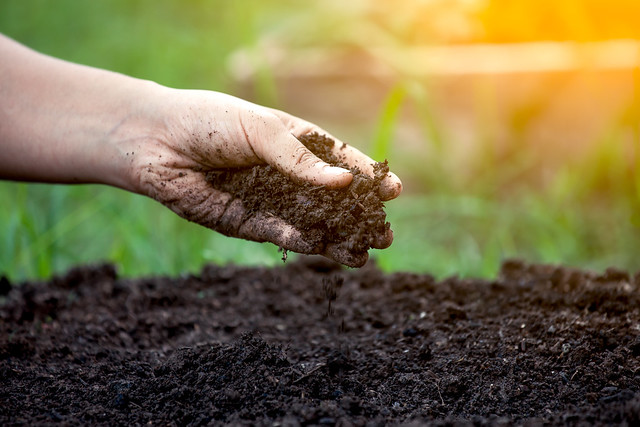
The next time you stroll outside after the rain, thank the soil bacteria below for the sweet, earthy smell that fills the air.
Credit for the pleasing smell goes to the bacteria’s spores, which get jettisoned off the ground and into the air by the impact of falling rain.
“These bacteria are everywhere. You can dig them up in your own backyard,” notes Neil Price, a chemist with the USDA’s Agricultural Research Service (ARS). For Price, though, it’s just a matter of pulling a specimen tube from the ARS Microbial Culture Collection, a repository of nearly 100,000 strains of bacteria and fungi kept at the agency’s National Center for Agricultural Utilization Research (NCAUR) in Peoria, Illinois.
The collection includes the Penicillium fungus strain (found on a moldy cantaloupe) used to mass-produce penicillin, a powerful antibiotic that saved countless soldiers’ lives during World War II and civilians thereafter. Decades of use has since enabled some germs to develop resistance to penicillin. Currently, germs resistant to penicillin and other antibiotics account for 23,000 U.S. deaths annually.
One counter strategy could come from tunicamycin, a natural compound made by certain soil bacteria that repel rival microbes. When tunicamycin was first discovered in the 1970s, researchers were initially excited by its medical prospects, especially in bolstering the effectiveness of penicillin-based drugs. But those hopes were dashed with the subsequent finding that tunicamycin also blocks a key protein in human and animal cells.
Price’s group has now overcome this hurdle by retooling the compound so that it poses little or no harm to human and animal cells but still kills germs.
In laboratory trials, mixing the rebuilt tunicamycin with oxacillin and other penicillin-based drugs increased their antibacterial activity by 32- to 64-fold.
Price acknowledges “a long road” ahead before any commercial uses, including as a penicillin booster, to help manage livestock diseases and infection. But he takes satisfaction knowing his team’s efforts have come full circle, starting in the 1940s with the Peoria Center’s penicillin contributions and now in helping extend the antibiotic’s usefulness to humankind—with the aid of rain-loving soil bacteria.
“We’re pretty proud of that,” he adds.

